
Friday essay: invisible no more putting the first women archaeologists of the Pacific back on the map
(MENAFN- The Conversation) History is the study of“present traces of the past”, as historian Judith Allen once put it. In our Pacific Matildas research project, we are recovering the hidden traces of the first female archaeologists in the Pacific.
Historians of western science have well documented the“Matilda effect”: how female scientists were written out of history , with barriers to accessing education, qualifications and professional roles.
Often, women had to practice science via alternative pathways (such as by making scientific illustrations ). This rendered them invisible in the records and/or concealed by the“halo effect” – where prominent scientists (typically older, white men) were credited for the work of less recognised collaborators.
Read more: Women have been written out of science history – time to put them back
Archaeology, the discipline that uses material remains of the past to trace human history, has long been associated with the image of a solitary masculine adventurer rather than a woman with a trowel in hand . The TrowelBlazers project, for instance, seeks to remedy this by celebrating women archaeologists, palaeontologists and geologists.
Pacific Matildas focuses on our own region, Oceania, to tell the stories of the first women in the field, to understand the barriers they faced and highlight their legacies.

The Hienghene area far to the north of Noumea. Pacific Matildas focuses on women archaeologists of Oceania. James Shrimpton/AAP
Our interactive map locates the research conducted by 50 women identified as Pacific Matildas: the first women to participate in the development of archaeology as a science.
Our timeline starts with those rare women who took part in European voyages of exploration. It ends with the exponential entry of women into professional archaeology after the 1960s.
The earliest we know of was Rose de Freycinet who accompanied her husband, Louis de Freycinet on an expedition around the world in 1817-1820.
Rose de Freycinet by Jacques Arago. Source gallica.bnf.fr / Bibliothèque nationale de France
Rose was the first woman to record her circumnavigation, writing down her observations of Indigenous groups in places such as Australia, The Mariana Islands and Hawai'i, including details on their customs and material culture. Although not directly related to archaeology (the discipline was just emerging), her writings are important as the first direct source voicing a female, western view of the Pacific.
The Pacific Matildas include lesser known researchers such as Mā'ohi expert Aurora Tetunui Natua, who collaborated with many 20th century western archaeologists in French Polynesia. They also include more recently recognised scholars, such as New Zealand's Janet Davidson , renowned for her pioneering research across many Pacific islands and her work in NZ cultural heritage.
As well as putting the women back on the Pacific map, our bibliographic catalogue compiles some 2,000 written works produced by or through the labour of these women, so their scientific legacy can be rediscovered, analysed and referenced. Importantly, we include not just English references but some in French, German, Spanish and Tahitian.
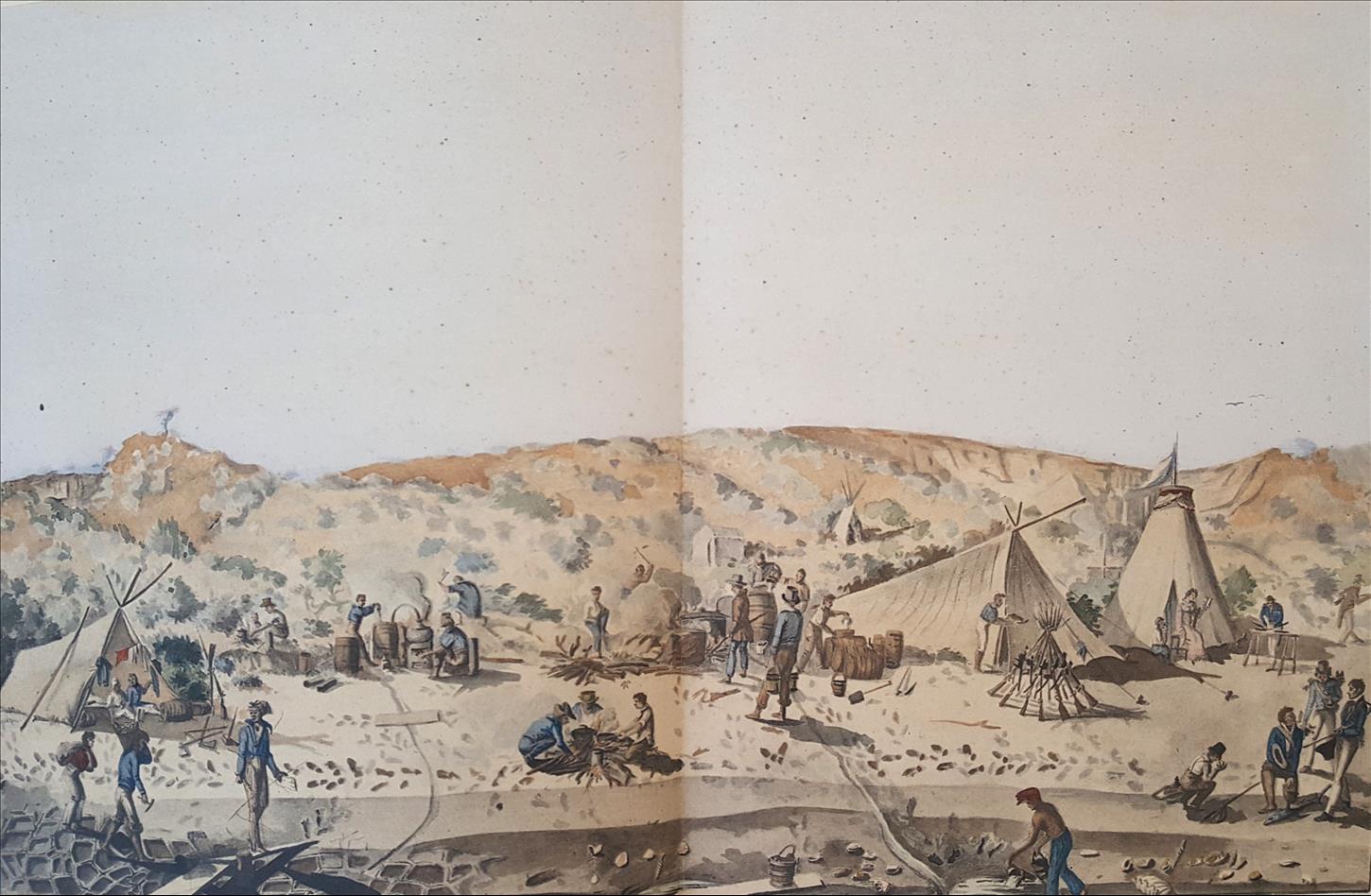
Rose de Freycinet in front of the tent to the right of the observatory, Shark Bay, Western Australia in 1819; reproductions of original watercolours painted on the Freycinet voyage by Jacques Arago and Alphonse Pellion. Wikimedia Commons
Pacific Matildas are not always listed as authors of these works. We have sometimes had to identify their contributions by reading against the grain: finding traces of their essential roles in the acknowledgements or prefaces of publications; in unpublished reports and in archival documents such as photographs, field-notes, journals and letters.
One such example is Jeanne Michel Leenhardt , an indispensable collaborator in New Caledonia to both her famous pastor-anthropologist husband Maurice Leenhardt and early archaeologist Marius Archambault.
Jeanne Michel was born in 1881 in France and well educated. Her father was an influential art historian and curator at the Louvre Museum; her mother was born and raised in Hawai'i as the daughter of the minister of foreign affairs. Jeanne Michel married Leenhardt in 1902, eager to embrace the missionary vocation.

Jeanne Michel and Maurice Leenhardt. Association des amis de Henry et Stella Corbin
During almost two decades living in New Caledonia, she took an active part in her husband's research. She gathered ethnographical information – notably from women – discussed his ideas and edited his writings. These writings also considered the island's prehistory in collaboration with Archambault's work.
Back in France, she continued to work with her husband, attending scientific meetings and conferences with him. Jeanne Leenhardt is never officially mentioned as a collaborator in her husband's writings. But historical archives, family letters and other accounts help to document her essential role.
Interestingly, women who succeeded in practicing as archaeologists or anthropologists, often did have their skills acknowledged and were well respected by their contemporary male peers. While the latter had stable professional positions, the women mostly had to navigate insecure positions, working as“assistants” or“volunteers”. Thus the legacy of their research has faded quickly compared to the men of the time.
Read more: Hidden women of history: Ennigaldi-Nanna, curator of the world's first museum
Beyond 'founding fathers'The Pacific Matildas map is a striking reminder that all along, women were actively present in the field. But we, the younger generations of Pacific archaeologists and historians of science, have been blinded when it comes to seeing them and their contributions.

A screenshot of the Pacific Matildas map. Author provided
For instance, when studying Pacific archaeology in the 2000s (in France and Australia), we would hear about“founding fathers”. This included Edward Gifford, leader of archaeological expeditions in the 1940s and 1950s in the Pacific southwest, attached to the discovery of Lapita (first settlement) sites dating back 3,000 years; José Garanger, who started the only course in France on Pacific prehistory in the 1970s; Te Rangi Hiroa, Maori scholar of Polynesian cultural history and director of the influential Bishop Museum in Hawai'i in the 1930s, or Ralph Linton, first PhD in Pacific archaeology in 1925, at Harvard.
We learnt a lot less about the successful academic career of Mary Elizabeth Shutler, who played a critical role in the first professional archaeological expedition (led by Gifford) to New Caledonia in 1952. Born in California as Mary Elizabeth Hall, she began studying anthropology at UC Berkeley in the late 1940s. There, she met and married fellow student Richard. When he was invited to join the Gifford expedition, she was able to join as a“voluntary assistant” because she spoke French.
In fact, she was the only French-speaking team member, becoming the main interlocutor to local Kanak fieldworkers and expedition guides. She gathered oral traditions and cultural information related to archaeological sites they excavated – including, possibly, the name of the famous Lapita (Xapeta'a) site , on the west coast of New Caledonia's Grande Terre.
Despite this, and historical sources clearly demonstrating her active role in archaeological fieldwork, the monograph for the expedition is authored by Edward Gifford and Richard Shutler.
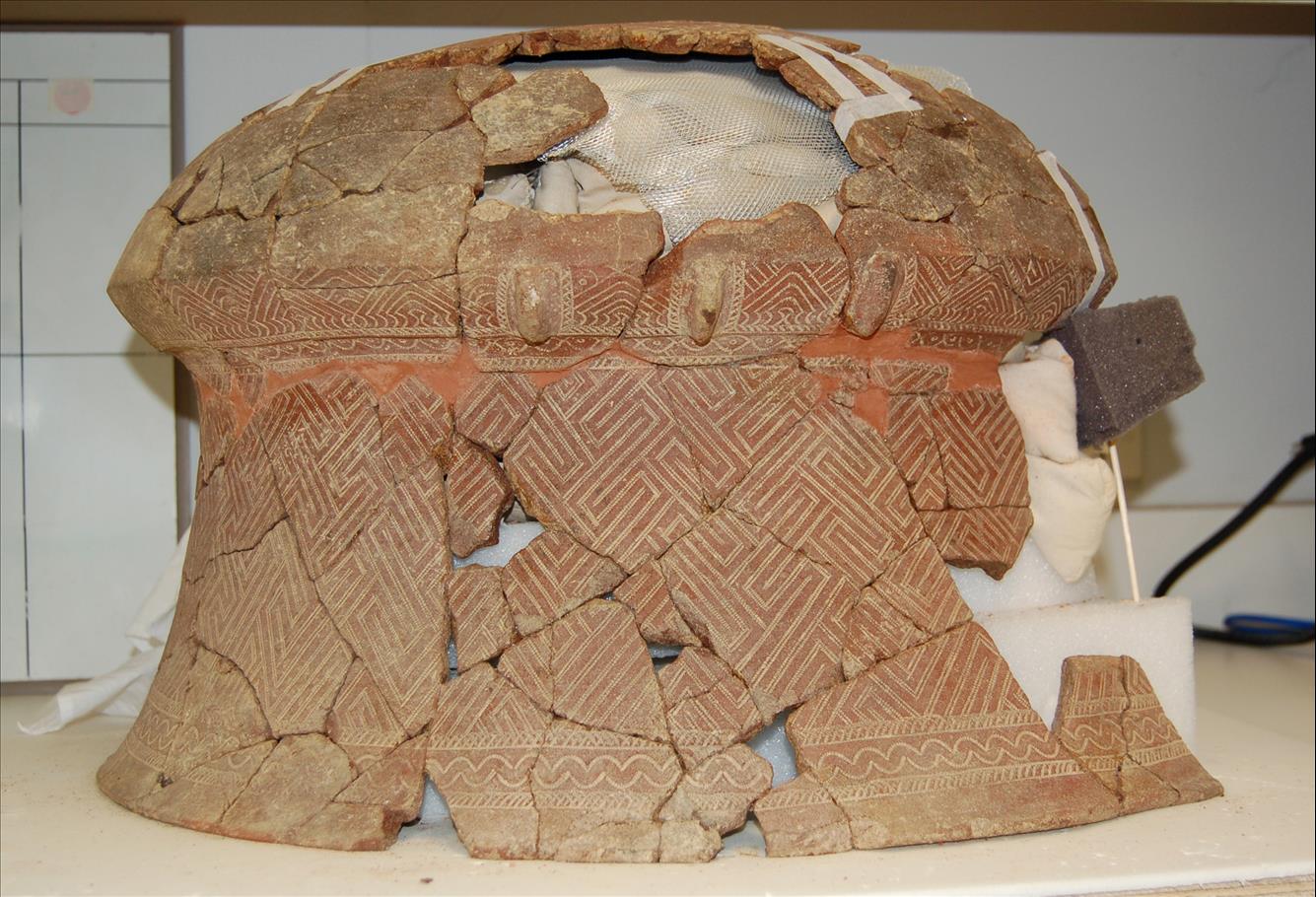
An elaborately decorated pot found during an archaeological dig in Vanuatu, shedding light on Lapita settlement and society in the region. Colin MacGregor/AAP
Mary Elizabeth Shutler then pioneered ethno-archaeological studies of pottery in Vanuatu. She led archaeological excavations and analyses with her husband in the archipelago, while studying to obtain her PhD in 1967 and raising three children. Later, in the US, she went on to a successful academic career in a number of American universities.
Opening doorsSimilarly, few would be familiar with the work of Tahiti's Aurora Germaine Tetunui Natua , who coordinated fieldwork access for archaeological research conducted in French Polynesia between the 1950s and 1980s – including some led by“founding fathers”.
Born in Papeʻete in 1909 in a respected scholarly local family with strong links to Tahiti and Maupiti , Natua was an early local collaborator to western scientists. She spent some time in France – one of the first Pacific islanders to join the newly formed Society of Oceanists in 1945 – and became archivist-librarian then curator of the Museum of Tahiti, a position she held for more than 30 years.

Taputapuātea Marae of Raiatea, French Polynesia, a UNESCO World Heritage site. Shutterstock
Her essential collaboration in anthropological and archaeological research conducted in French Polynesia is traceable in a long trail of acknowledgements and references found in several published and unpublished works. Historical sources show she was excavating with the scientists and present in the archaeological operations from the very beginning – as negotiator, translator and supervisor of the land access.
She was there too, in the final stages of conservation and analysis of the artefacts discovered – as a recognised scholar, librarian and curator. For western researchers, she was literally a key person: opening (or closing) the doors to Polynesian archaeology.
Read more: The stories of Tupaia and Omai and their vital role as Captain Cook's unsung shipmates
PioneersAs far as we know, the second and third PhDs ever earned in Pacific archaeology were obtained by women. One of them was Margarete Schurig. We know little about her as she tragically died soon after completing her doctoral dissertation on Pacific pottery in 1926 at the University of Leipzig.
The other was Laura Maud Thompson who completed her PhD on“Native trade in southeast New Guinea” in 1933 at UC Berkeley. Thompson was born in Hawai'i in 1905 to English and American parents. She studied anthropology on the mainland in the 1920s – among the very first women to do so.
In her memoirs, she recounted the prejudices she faced as a woman. She could not enrol in Harvard as women were not admitted. She left Radcliffe, where she was studying as a graduate, after a professor of Oceania studies requested she sit in the hall rather than the lecture room where she might“distract” the men.

The Bishop Museum, Hawai'i, where Thompson worked. Shutterstock
Despite this, she worked as assistant ethnologist at Hawaii's Bishop Museum on archaeological collections from the Mariana Islands in the western Pacific Ocean. She undertook fieldwork in Fiji and then the Mariana, publishing her archaeological results and ethnological analyses. The rest of her long and successful career shifted towards more socio-cultural and applied anthropology, in North America and Guam, where she developed strong relationships with the CHamoru people .
Thompson's research on Guam was based on analysis of collections and field-notes gathered by husband and wife team Hans and Gertrude Hornbostel . Born in Switzerland in 1893, Gertrude had moved with her family to Guam at the age of eleven.
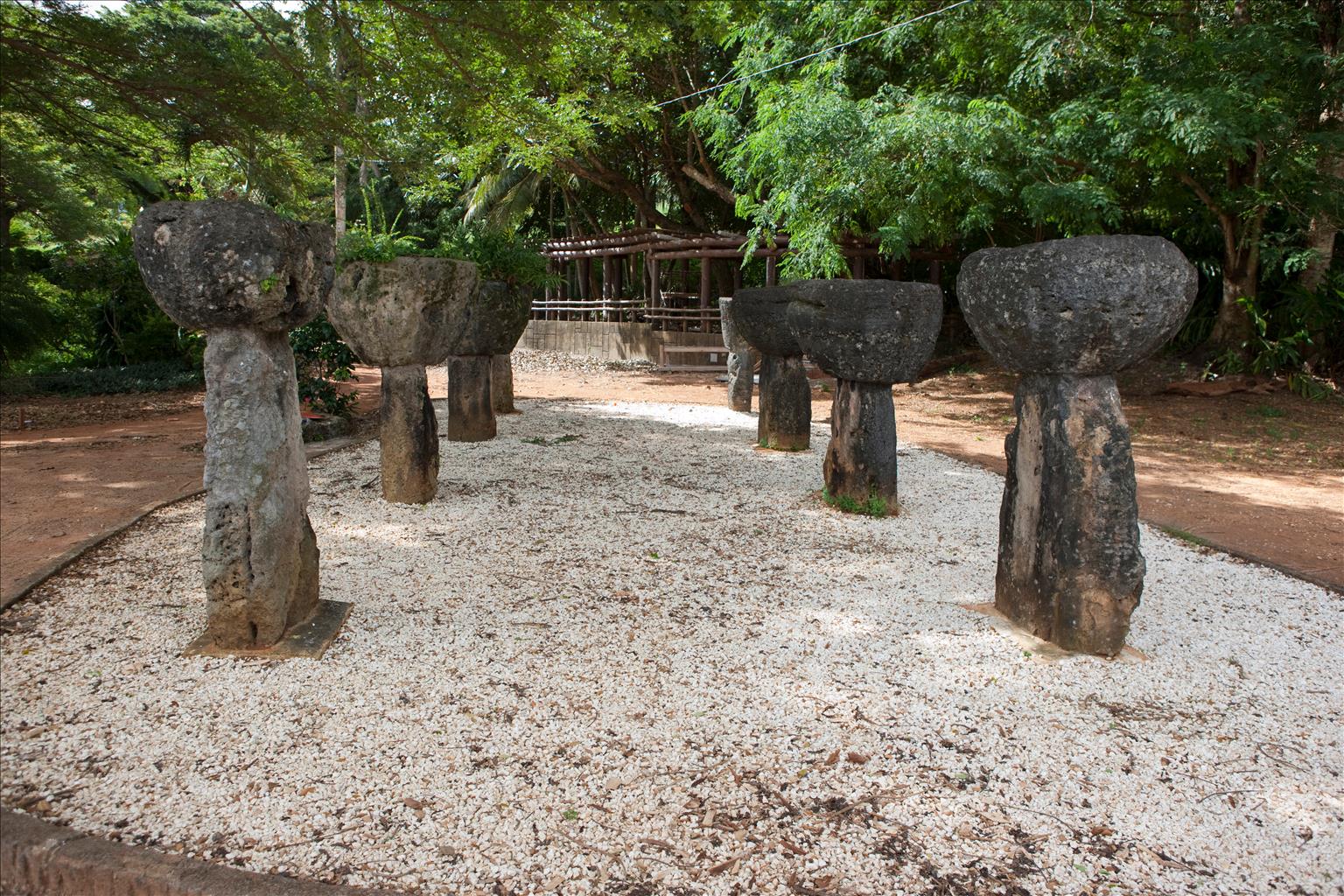
Traces of ancient buildings on the island of Guam. Shutterstock
There, she learned to speak fluent CHamoru and became known as“Trudis Alemån” – a name she later published under. Gertrude met and married Hans in 1914, assisting him with his work as an anthropologist. She collected, recorded and translated CHamoru stories, songs and customs, producing illustrations of important archaeological sites and artefacts.
Read more: Where were all the women in the Stone Age?
'Wives'Many“wives” of noted archaeologists took part in archaeological excavations, data analysis, and monograph writing, sometimes only to have their contributions mentioned in the acknowledgement section.
Take the research of Douglas and Carolyn Osborne in the mid-20th century. The pair met as graduate archaeology students at the University of New Mexico, marrying in 1941. From 1954-55, they conducted some of the first systematic surveys and excavations of prehistoric sites in Palau. Carolyn is not a co-author of the seminal 1966 publication, The archaeology of the Palau Islands, an intensive survey . Instead her role and contributions are simply acknowledged by her husband. He writes:
What is clear is that Carolyn's involvement was crucial to the success of the research. What is less clear is how she ended up absent as co-author of a work for which she was largely responsible.
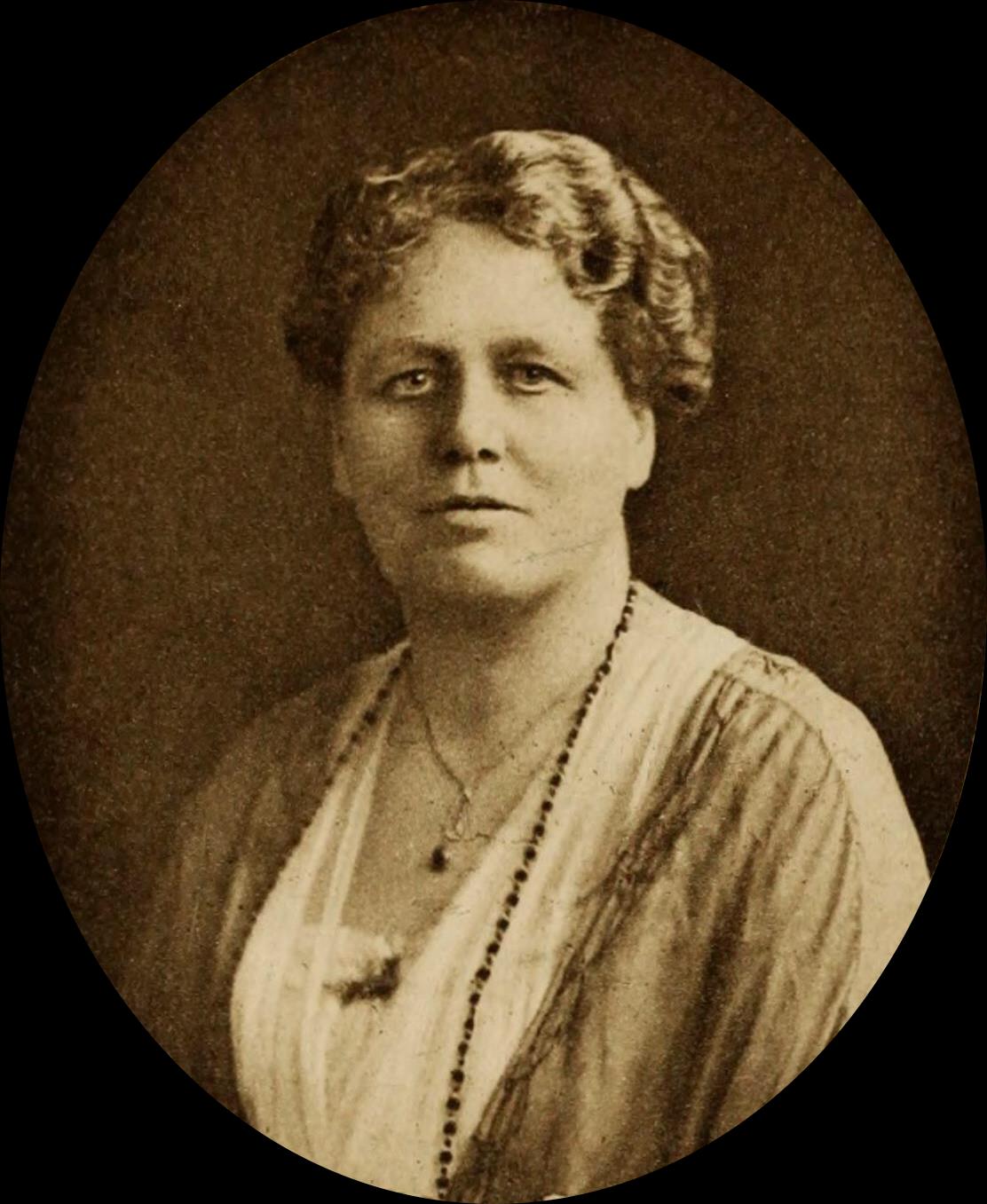
Katherine Routledge, circa 1919. Wikimedia Commons
Even the work of one of the best known, trailblazing field archaeologists, Katherine Routledge, in Rapa Nui (Easter Island) has not been properly considered in all its importance. In 1914, Routledge, a British archaeologist and anthropologist, was among the earliest to conduct planned archaeological excavations in the Pacific.
Her legacy was under-explored until archaeologist Jo Anne Van Tilburg wrote a 2003 book about her, examining her unpublished field-notes and other archives.
Read more: The truth about Easter Island: a sustainable society has been falsely blamed for its own demise
The intellectual context for Routledge's expedition, the field and excavation methods applied, the complex relationships established with the Rapa Nui community and the results of her work – notably her conclusions that the large statues, mo'ai, were indeed linked to the past of the Indigenous people of the island (and not to a mysterious civilisation) – still needs to be integrated into the general narratives about the history of Pacific archaeology.
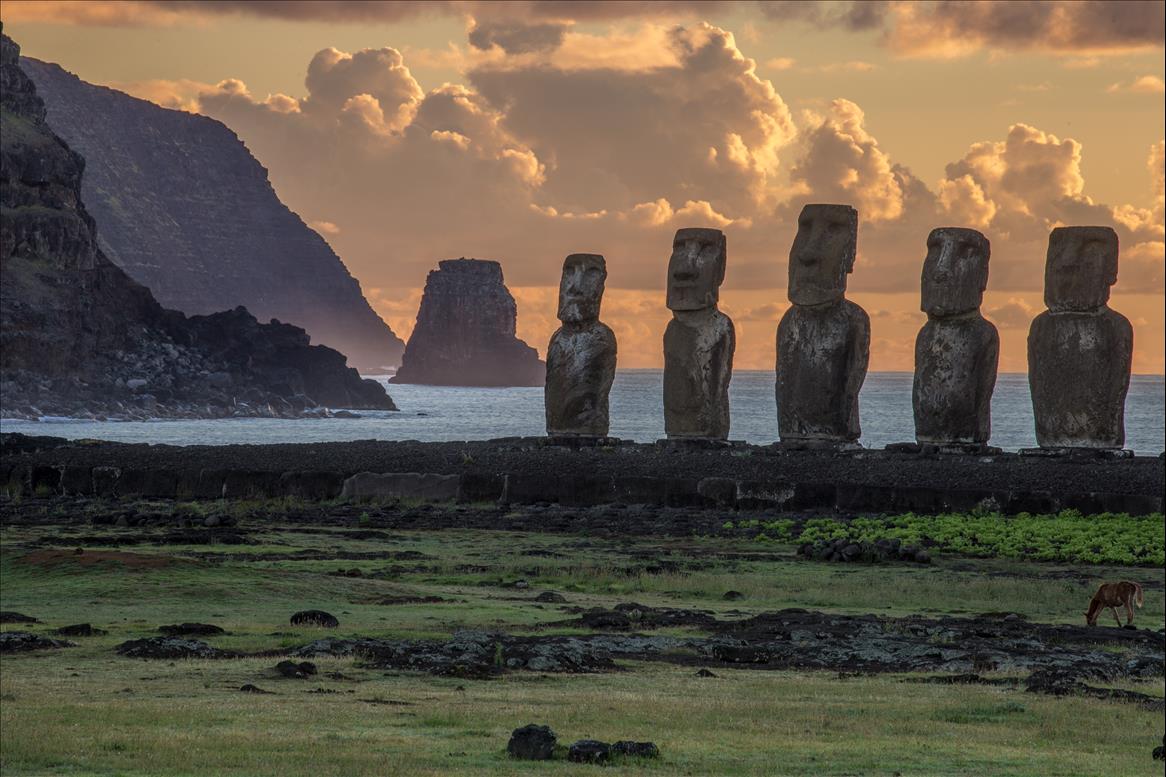
Mo'ai statues in the Rano Raraku Volcano in Easter Island, Rapa Nui National Park, Chile. Shutterstock
There are many more stories to tell about the Pacific Matildas. More often than not, these open doors to even more hidden histories – especially those of Pasifika people who played an instrumental role in the work of early archaeologists.
Historians are gathering increasing evidence that“minority” groups found ingenious alternative ways to participate in the development of science. Yet we cannot ignore the intersectionality of various factors of oppression – typically race, class, gender and complex colonial relationships – which made it harder for some people to do so.
That's why it is important to continue fighting discrimination and supporting diversity in scientific research. One of the best tools we have is to talk loudly about the figures, such as these women, who played an instrumental role in building our scientific knowledge of the world. For too long they have remained hidden behind“founding fathers”.
The Matildas were identified as“women” mainly by their collaborators and the dominant social structures around them, which might not always correspond to their own chosen gender identity, a complex matter we acknowledge .
Access The Pacific Matildas Bibliographic Database (© India Ella Dilkes-Hall and Emilie Dotte-Sarout, 2021) and The Pacific Matildas Geographical Visualisation (© India Ella Dilkes-Hall, 2021).

Legal Disclaimer:
MENAFN provides the
information “as is” without warranty of any kind. We do not accept
any responsibility or liability for the accuracy, content, images,
videos, licenses, completeness, legality, or reliability of the information
contained in this article. If you have any complaints or copyright
issues related to this article, kindly contact the provider above.

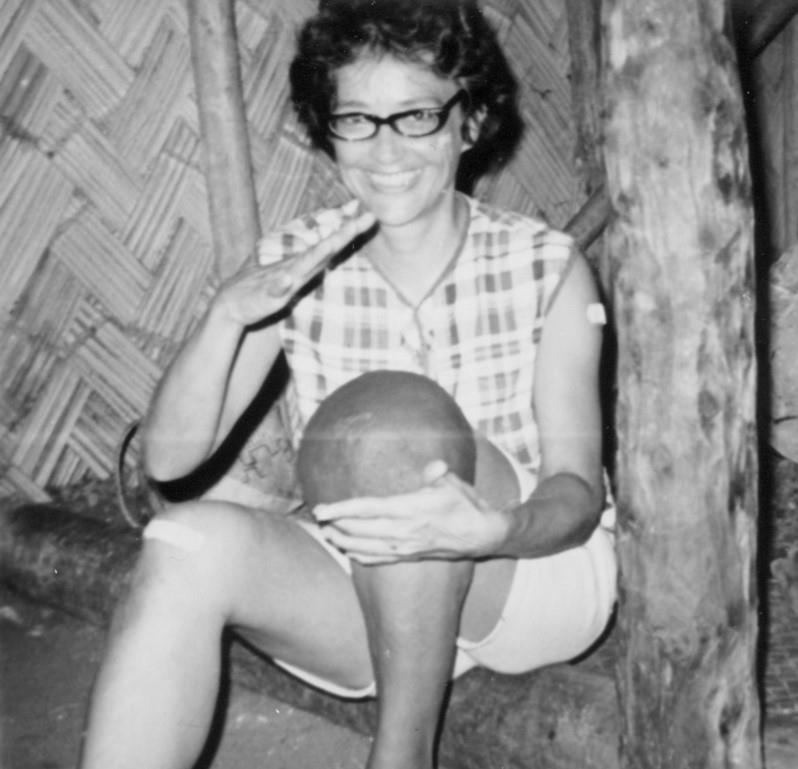
















Comments
No comment